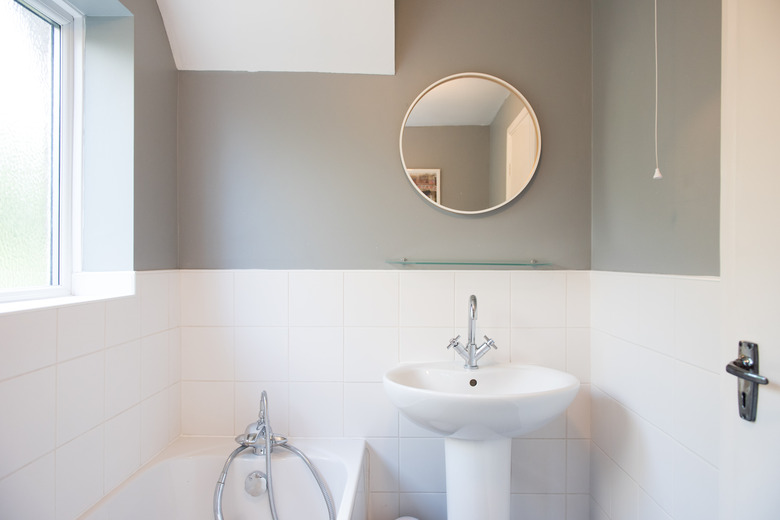How To Repair Tiny Sink Cracks
We may receive a commission on purchases made from links.
Porcelain sinks are very durable, but even the sturdiest sinks are susceptible to everyday wear and tear. Although it is common for a porcelain sink to crack, and your first line of defense may be to replace the whole basin, you can repair sink cracks and chips yourself without removing your entire sink. A little porcelain filler should erase all of your cracked sink problems.
How to Repair Sink Cracks
How to Repair Sink Cracks
Before you repair your cracked sink, you need to clean it to remove any residual dirt and grime. Use water, an all-purpose cleaner and a sponge to clean the area and let it air-dry. Once your sink is completely dry, use fine sandpaper (400 to 600 grit) to sand the chipped or scratched area. You want to make sure you sand the edges of the chip or scratch as well so your filler and touch-up paint adhere to the area.
When sanding the area, although you should roughen up the edges, also make sure that you do not scratch any unblemished areas. After you sand the area, use a porcelain filler/repair compound to fill the chip or scratch. Apply the filler with a small brush. You may be tempted to put a lot of filler on the cracked or chipped area, but instead apply the filler in thin layers until the crack or chip is filled.
Don't forget to let the filler dry after each application, and before you start adding another layer, lightly sand the area because the filled-in repair should be level with the entire sink. If you don't know how long to wait, check your filler's instructions before starting another layer, because most brands specify how long it takes the filler to dry.
After you apply the filler and let it set, you can apply porcelain touch-up paint over the filled area. Touch-up paint comes in a variety of colors, so make sure you match the color to your sink's finish. If your scratch isn't super deep, you may be able to get away with using the porcelain touch-up paint without filler.
Replacing Your Sink
Replacing Your Sink
In some cases, you may have to replace your sink. If you notice that water is leaking from the cracks in your sink, you need a new sink.
Before you remove your sink and prepare the area for a new one, you need to shut off the water to the sink. To turn off the water, turn the supply valve clockwise. Once the water is turned off, disconnect the plumbing lines that run to the sink.
What Causes Cracks?
What Causes Cracks?
There are many ways for a porcelain sink to get cracks, chips or scratches. One way is if an item is dropped into the sink. Heavy, solid items can easily chip your sink, so try to keep heavy objects away from it.
Another cause of porcelain sink cracks is temperature. Porcelain sinks don't like rapid temperature changes because they are layered on metal. Since metal is a heat conductor, if you pour hot water in your sink, the rapid change in temperature can cause the sink to crack.
Sometimes it may not be you that causes the problem; your porcelain sink could just be old. Hairline fractures can cause larger cracks and even holes in your porcelain sink. For older sinks, try resurfacing it to give it a whole new look.
